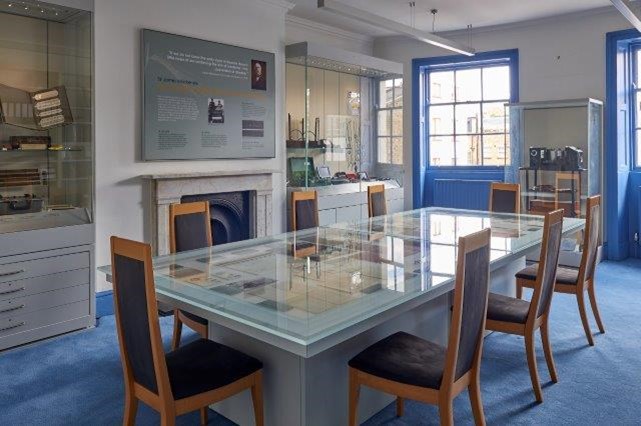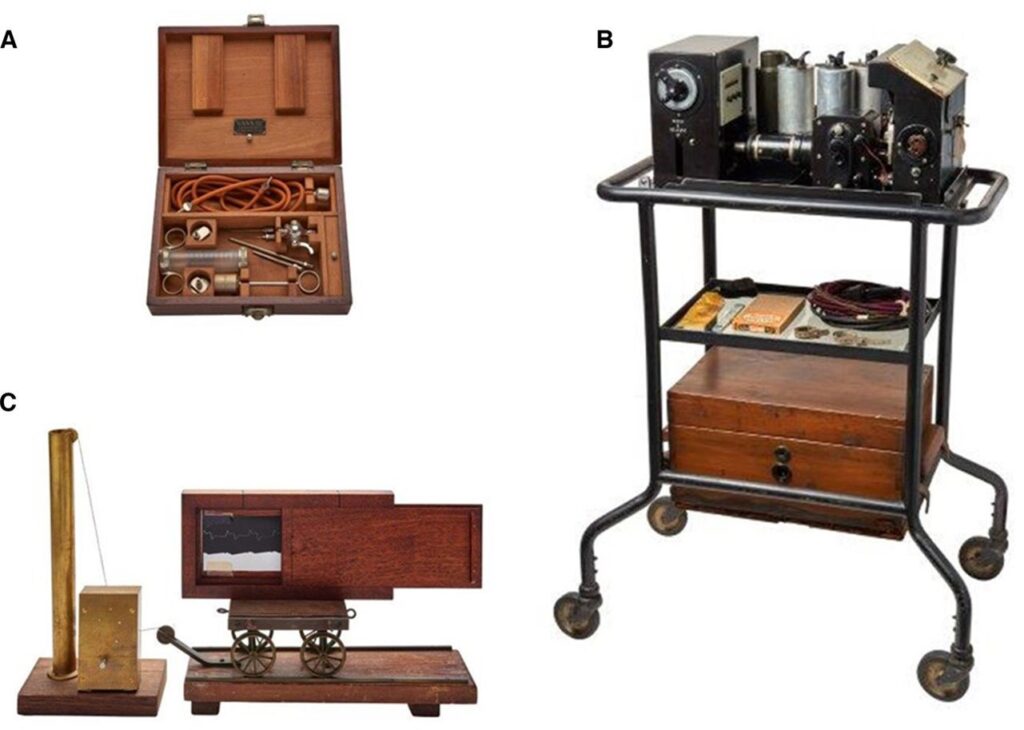
Our History
The foundation of British cardiology began with Sir James Mackenzie (1853 – 1925), a Scot who graduated from the University of Edinburgh and subsequently became a general practitioner in Burnley. Mackenzie developed an interest in the pulse and his work attracted the attention of other physicians interested in heart disease.
It was around 1910 that Mackenzie suggested this small group of like-minded physicians should form a club, but the First World War intervened. After the war, the government appointed consultants in all regions of Britain to give advice about pensions for people with war-related cardiac problems. The first meeting of the Cardiac Club was held in Oxford on Saturday 22 April 1922 and the original members can be seen in the image above.
For our centenary celebrations in 2022 we published a special edition of our official journal Heart, including an article on our history by BCS Archivist Dr Caroline Coats.
BCS Museum and Archive
The historical archive of the British Cardiovascular Society provides a unique insight into British cardiology and the development of our specialty. The collection was the brainchild of Dr Arthur Hollman (1923 – 2014), a former BCS secretary who bequeathed many items and promoted the importance of history and plants in medicine.
He followed in the footsteps of Maurice Campbell and Evan Bedford, who had carefully ensured the story of the Society and specialty was maintained for future generations. The Arthur Hollman BCS Archive aims to acquire, organise and preserve material relating to members of the Society and British cardiology.

The BCS Museum, Library and Archive is exhibited across several floors of BCS HQ, 9 Fitzroy Square, London.
The three main meeting rooms are named after pioneers of British cardiology: Sir James Mackenzie, sir Thomas Lewis and Paul Wood.

Items of note include
- an early pericardial aspiration kit (a)
- a complete 1929 portable ECG made by the Cambridge Instrument Company (b)
- the original toy train used by Augustus Waller in 1887 to record the first human electrocardiogram.
